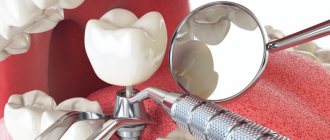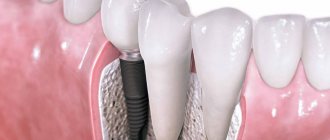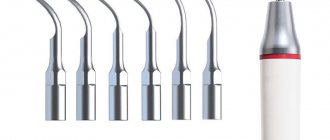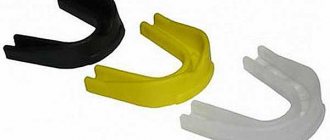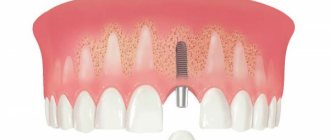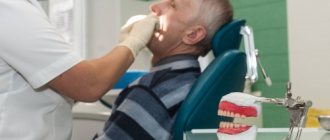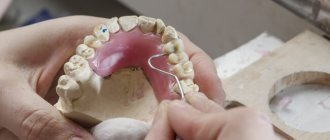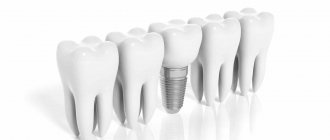Publication date: 02/27/2021
In an era of huge information flow, it can be difficult for a person to distinguish truth from fiction or an existing stereotypical opinion, moreover, a subjective one. Implantology is also not ignored. Such a number of rumors, distorted facts and simply fiction that implant surgeons are faced with is probably not found in any other medical field. Myths about dental implants are breaking records.
Fear of surgery forces patients to listen to various rumors and stories about the terrible consequences of treatment. However, all these horror stories are based on outdated data or have no basis at all. In this article we will debunk the most common myths and tell you why implantation is the most physiological, aesthetic and reliable option for dental restoration.
MYTH 1: Getting an implant is painful.
Implantation is the surgical insertion of an implant into the jawbone to replace the missing tooth root. Like any other invasive dental procedure, implantation is performed under anesthesia. Considering that bone tissue has no pain receptors at all, the process of installing and engrafting an artificial root is painless. After the intervention, unpleasant sensations may occur (minor pain, swelling of the gums), but this is a natural reaction of the body, which passes without consequences and is controlled by the usual painkiller.
Implantation price
The cost of installing a dental implant depends on many factors, such as the type of implant, the material and manufacturing technology of the crown, and a number of other factors.
You can see prices for dental implantation in our price list
How much does it cost to install an implant?
| No. | Name of service | Price |
| 1 | The operation of installing one premium implant “SLActive” from Straumann | 38,000 rub. |
| 2 | Installation procedure for one Alpha Bio implant (including plug) | 24,000 rub. |
| 3 | The operation of installing one premium implant “NEO” from Alpha Bio (including a plug) | 27500 rub. |
| 4 | Installation procedure for one DIO implant (including plug) | 17250 rub. |
Implantation and pain
Every patient is concerned about the pain that accompanies the implantation process. Implant installation, like any surgical procedure, is performed under local anesthesia.
After implantation (installation of an implant) of teeth, slight swelling and pain may occur, which disappear within a few days. The doctor gives recommendations. Engraftment of the implant does not cause any discomfort.
The gum former is also installed under local anesthesia.
MYTH 3: Implants often fail
Outdated disc and plate implant models caused many problems for patients due to complex, traumatic fixation into the bone. They did have a high rejection rate (50%). Such models have not been used for a long time, but the stereotypical opinion remains. The latest generation implantation systems are made from biocompatible, hypoallergenic material (medical titanium, zirconium oxide). Thanks to the root-shaped shape of the implant, similar to the anatomy of a natural tooth root, and a special active coating, successful engraftment is ensured in 98-99% of cases.
MYTH 4: Implantation takes a long time
Of course, dentistry has not yet learned how to grow new teeth instead of missing ones in one day, and treatment will take some time. As for the procedure itself, it takes less than an hour. From the initial consultation to the installation of the prosthesis, it can take 6-12 months, sometimes more. But this does not mean that you will need to go to the dentist every day all this year. Implantation takes place in several stages, each taking a minimum of time. The longest is the fusion of the implant with the bone (osseointegration). This process lasts about 3-6 months.
All-on-4 and All-on-6 protocols
All-on-6 is a protocol used when installing implants. Implantation is an adequate way to replace missing teeth. When fixing the prosthesis, 4 or 6 dental implants are used, thanks to which they reliably fix the orthodontic structure.
Features of using the protocol
A special feature of using All-on-4/All-on-6 is the ability to leave with your teeth on the day of surgery; in some cases, the process takes up to 7 days.
Advantages of using this technology:
- the possibility of quickly obtaining results, for example, a beautiful smile immediately after implantation, as well as full functioning of the dentofacial apparatus
- absence of destruction processes in the bone after installation due to the rapid installation of dentition
- teeth quickly from 2 hours to 7 days
The ability to quickly install a prosthesis helps reduce the mobility of the entire system and ensure its strength. In this case, the implants themselves are positioned correctly, the process of bone tissue restoration occurs as quickly as possible, and the new implants immediately receive pressure from the chewing process. This ensures good circulation of blood and nutrients in the tissues, improves metabolic processes, and also accelerates the healing processes of damaged bone tissue.
To further create structural strength, an implant can be inserted into the deep layers of the jaw. The peculiarity is that the processes of bone atrophy do not affect these layers, which is widely used in patients who do not have load processes on the bone due to prolonged absence of teeth.
In what cases is All-on-4/All-on-six used?
- Complete absence of teeth in the upper or lower jaw due to various reasons (for example, trauma, disease, tooth extraction)
- Partial absence of teeth due to their extraction or loss for various reasons
- Bone atrophy. This process of reduction in volume and deterioration of metabolic processes due to impaired nutrition of bone tissue occurs in the absence of chewing load. Typically, this process begins 1-2 years after tooth loss.
- Long-term wearing of removable dentures. On the one hand, they provide a beautiful smile and partially preserve the function of chewing. But on the other hand, they are not able to fully provide sufficient chewing load. This further leads to bone atrophy, gastrointestinal disorders and other imbalanced conditions in the body.
Application of technology
The treatment protocols are outlined below in plan form:
- Examination. The doctor recommends a CT scan and then takes impressions. Before starting treatment, it is necessary to check the patient’s health and the presence of contraindications.
- Modeling. It is produced using special software. The model displays the properties of the prosthesis or implant. This stage is needed for a preliminary assessment of the result, bone structure, etc.
- Implantation. Involves the simultaneous installation of 4 or 6 implants. At the same time, it is screwed in a certain way so that most of it gets into the bone tissue. Next, the implant healing process begins.
- Implantation of a prosthesis. The final stage is performed if the implant healing process is completed without deviations or complications. The prosthesis is completely identical to the shape of the patient’s teeth. The basis of the prosthesis is an arch - a base made of metal, onto which crowns and, if necessary, artificial gums are attached. The process of installing teeth takes place in 2 stages. At the first stage, temporary teeth are installed, which last approximately 6 months. They are necessary until osseointegration is completed. Then the final version of the teeth is installed, designed to last for many years.
Nuances of the All-on-4/All-on-6 protocol
6 points of support are used when implanting a prosthesis:
- 2 artificial implants are installed vertically in the center of a row of teeth
- 4/6 of the implant is attached to the lateral parts of the dentition
During the implantation process, deep layers of bone tissue are affected, which increases the strength and reliability of the installed structure. Most of the implant is attached to the abutment, which gradually tilts after the prosthesis is implanted. This facilitates proper placement of the prosthesis.
Features of application:
- Absence of teeth (both complete and partial), all depending on the period of their absence
- Atrophy of the jaw bone of moderate severity. In this case, implantation is performed in deeper bone layers.
- During simultaneous tooth extraction, the implant can be installed directly into the socket
- Inflammation or gum disease
- Good degree of structural fastening
The SEN-clinic Center for Dentistry, Maxillofacial Surgery and Dental Implantation performs high-quality implantation and prosthetics, as it has specialists with extensive experience. We work according to modern protocols.
MYTH 5: Until the implant takes root, you will have to walk around with a hole in your mouth
Modern implantology has solved this problem. Innovative methods of prosthetics on Immediate Load implants make it possible to eliminate the wait during the implant healing period and to carry out prosthetics immediately after the intervention (within 72 hours). For prosthetics, lightweight orthopedic structures made of metal-plastic are used. This allows the patient not to experience discomfort due to missing teeth. The temporary prosthesis is replaced with a permanent one after complete engraftment of the artificial root. With classic two-stage implantation, the aesthetic deficiency is compensated with the help of a removable immediate prosthesis (butterfly) and adhesive (suspended) crowns.
In what cases are implants necessary?
Indications for dental implantation have increased significantly:
- After removing one of the teeth. This procedure is still popular in free clinics, but has negative consequences. The remaining neighboring teeth begin to change their position, trying to fill the resulting void. Dental implantation allows not only to restore the natural position of any teeth, but also to prevent changes in the bone after removal.
- After tooth loss. Lack of care and irregular visits to the dentist cause tooth decay and loss. With dental implantation, the oral cavity takes on its previous appearance. This type of treatment has replaced standard crowns and bridges, which are inconvenient and unsightly to use.
- Adentia (complete absence of teeth). There can be many reasons why a person experiences adentia. Previously, the disease was treated exclusively with inserted dentures. With the help of dental implantation, you can restore the jaw to its previous condition, partially or completely.
Dental implantation has some contraindications. The procedure cannot be used by adolescents under 14 years of age, with diseases of the blood, endocrine and cardiovascular systems, diabetes mellitus, and oncology.
MYTH 6: Implants are very expensive
The cost of implantation is more expensive than classical prosthetics, this is a fact. But if you consider in the long term, installing an implant will cost less than a traditional fixed bridge:
- The artificial root is implanted for life; only orthopedic structures are subject to replacement. The average service life of a classic metal-ceramic prosthesis supported by natural teeth is about 5-6 years, and supported by implants - 10-12 years.
- Manufacturers offer implantation systems in different price categories, among which it is easy to choose the optimal option in terms of quality and price.
- When replacing a classic prosthesis, retreatment of supporting units is often required, which increases the cost of reprosthetics.
- Since the main chewing load falls on the supporting teeth, the bone under the prosthesis begins to atrophy, the gums sag, which requires correction of the orthopedic system. This also affects the price.
Based on all of the above, implantation in the long term turns out to be more financially beneficial than traditional prosthetics.
MYTH 10: An implant can be installed on the same day of treatment.
Many patients are misled by the phrase “one-day implantation.” In fact, it involves restoring teeth using one-stage implantation methods with immediate loading of the prosthesis. Basal or one-stage technology allows you to restore missing teeth in a few days, even with severe bone atrophy. This became possible due to an integrated approach and the installation of artificial roots in the deep bicortical bone layers. Also, treatment time is reduced by loading the implants with a prosthesis almost immediately after surgery.
But one-stage protocols, like classical two-stage implantation, require preliminary preparation, including:
- Comprehensive diagnostics (X-ray examination, tests);
- sanitation of the oral cavity - removal of dental deposits (plaque, tartar), treatment of teeth and gums;
- eliminating existing obstacles to surgical intervention.
Without quality preparation, implantation is impossible. A reliable dental clinic is guided by the rule of professional responsibility and will never perform surgery without a full diagnosis, drawing up a treatment plan, and simulating the course of the operation. This is the diagnostic obligation of the doctor and he vouches for it. But myths about dental implants exist and will always exist; the main thing is to know them and evaluate them reasonably.
What is included in the total cost of dental prosthetics?
When installing a denture, the patient has to bear basic and additional costs. The following require separate costs:
- diagnostics of the dental system using radiography;
- treatment of identified dental diseases;
- preparing teeth for prosthetics (depulping, grinding, removal);
- taking impressions or using a computer modeling method;
- installation of temporary prosthetic structures;
- making permanent crowns or bridges in the laboratory;
- fitting, adjustment, installation of prosthesis.
If prosthetics on artificial roots is used, then the total cost of treatment also includes the cost of implantation.
Where to go for dental implantation in Moscow
The Ilatan Clinic in Moscow is one of the few where all modern, proven implantation protocols with immediate and delayed loading are used. The clinic’s doctors will select treatment taking into account the condition of the jawbone, aesthetic requirements, functionality of the dentition, and the patient’s financial capabilities. Implantation is performed on a turnkey basis, which protects against unexpected expenses. After a comprehensive diagnosis, the doctor will offer several treatment options - you can think about it and make an informed choice. All implantology services are guaranteed.
